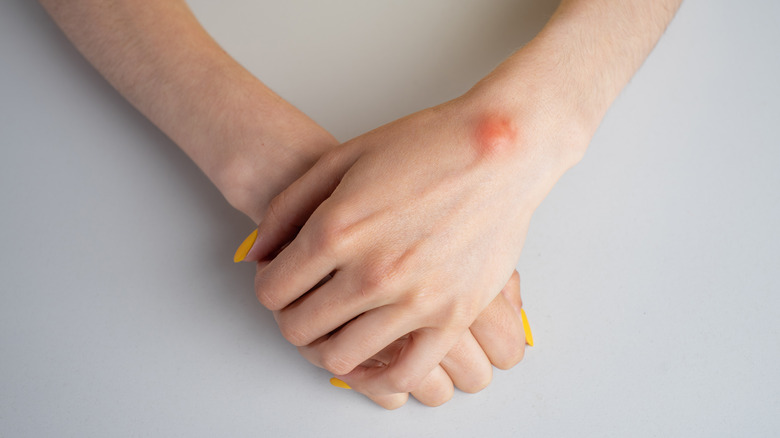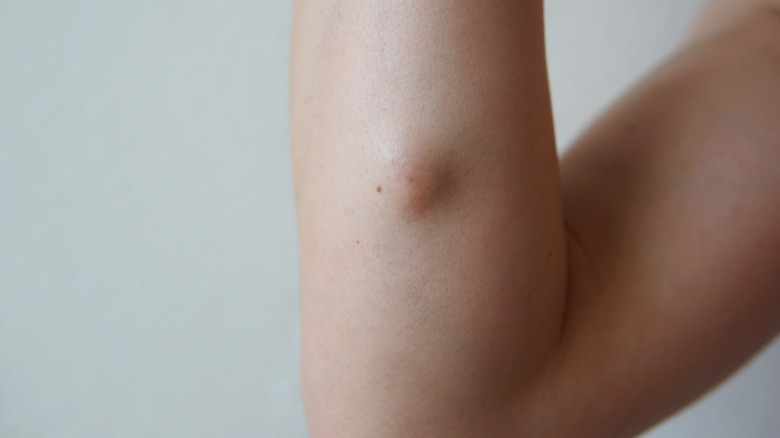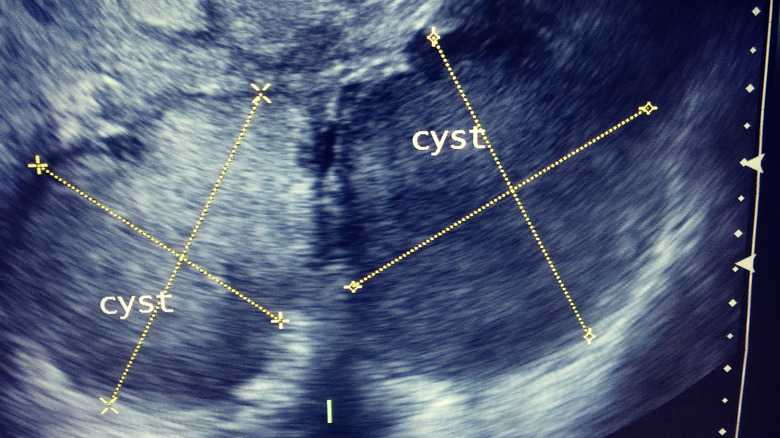This Is What Really Causes Cysts
If you strip away the tailored clothes, the foundation, and the filters, many of us are dealing with a variety of lumps and bumps on our skin. It could be acne, moles, a raised scar, or even a cyst. Whatever you have going on with your skin, it's important to know what's what and watch out for any changes.
The type of lump we're taking a closer look at at the moment are cysts. According to Healthline, a cyst is an accumulation of membranous tissue that can be filled with air, fluid, or another substance. It may be hard to identify if the newly formed bump on your skin is a cyst, as they can show up anywhere on the body and vary in appearance and size. The good news is that most cysts are not cancerous. However, that doesn't mean it won't need medical attention. If your bothered by this unwelcome lump, consider making an appointment with your doctor — especially if it becomes inflamed or infected.
The cause of the cyst can be determined by what type it is
Harvard Health notes a few of the most prevalent types of cysts. Two common kinds are found on the skin: epidermoid cysts and sebaceous cysts. Epidermoid cysts develop when surface skin cells move further down into the skin and multiply. Sebaceous cysts form when the glands in our skin that create sebum become blocked.
Another type of cyst is commonly found on our wrists, and it is a bit of a mystery. According to the Mayo Clinic, no one knows the cause of this cyst — known as a ganglion cyst. A ganglion cyst often looks like a small water balloon. Its cause may be a mystery, but it is known that you are at extra risk if you have had a joint or tendon injury in your wrist or if you have the common form of arthritis known as osteoarthritis.
Cysts can also form on the knee. Cedars Sinai explained that a cyst found on the knee — known as a Baker cyst, a popliteal cyst, or a popliteal synovial cyst — is usually a result of a knee injury or a knee disorder and "causes extra synovial fluid to leak into the extra space behind the knee."
Cysts can also form deep inside your body
In addition to cysts that are on the surface of the skin, there are also types that form deeper inside the body, like ovarian cysts. Harvard Health explained that an ovarian cyst usually forms when an ovarian follicle doesn't release an egg. Cysts can form in the cervix when mucus glands become blocked. Cysts on the kidney are quite common as well. In fact, it is believed that over 25% of adults over the age of 50 have this type of cyst. Their origin can be hereditary, or they may develop in those who have polycystic kidney disease.
Discovering a cyst in your breast can perhaps be one of the more alarming detections of them all. It's understandable. However, Cleveland Clinic shares that cysts found in the breast are benign, and often happen when milk glands become filled with fluid. If you do find a lump in your breast. Do consider seeing a doctor for proper diagnosis before assuming that it is a cyst.
Our bodies are wonderfully lumpy and bumpy. And it appears most of us are susceptible to getting at least one type of cyst throughout our lifetime. Their origins vary and they aren't typically cause for alarm. But when in doubt, make an appointment with a medical professional just to be on the safe side.



